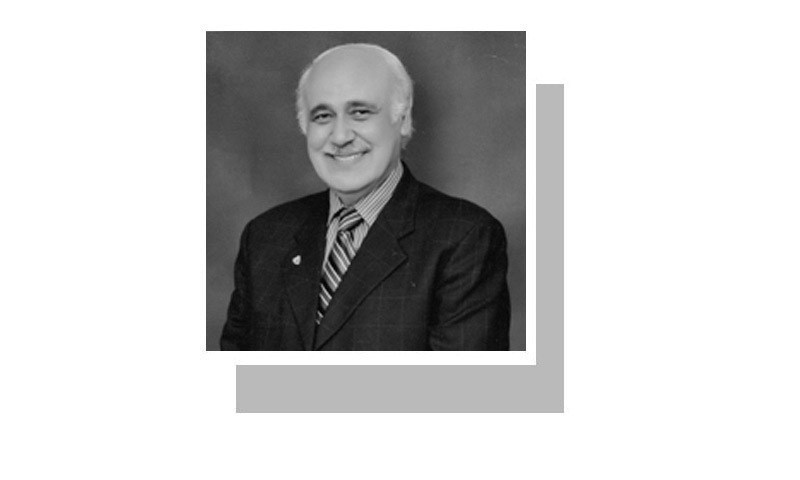CROWN Prince Charming has come and gone. He left behind a glass slipper worth $20 bn.
Saudi Crown Prince Mohammad bin Salman’s visit to Islamabad over Feb 17-18 was as grand as any palace ball. It had all the trappings — the state banquet, the regal investiture, the monarchical horse-drawn carriage procession. Our Prime Minister Imran Khan could not have done more to demonstrate his regard for his dynamic guest than to drive him personally to and from the airport. And Crown Prince Mohammad bin Salman could not have endeared himself more to his host than by responding instantly to his request to repatriate 2,107 Pakistani prisoners languishing in Saudi jails. It was an act of mercy worthy of an absolute ruler.
There is a palpable chemistry between the Saudi leader and our prime minister. They enjoy a personal rapport that even artful diplomacy cannot manufacture. It telescopes age. Mohammad bin Salman, at 33, is half Imran Khan’s age. Yet, the premature sagacity of one and the deceptive youth of the other came together on this visit in an unexpected crescendo.
In pictures: Pakistan pulls out all the stops for Saudi crown prince
Some attribute this to their need for mutual certification. The crown prince, after the Khashoggi stigma and the chilly G20 summit in November 2018, needed affirmation that he still has a place on the international stage. He chose the eastern hemisphere — Pakistan, India and China — for his reappearance.
Prime Minister Khan wants Saudi Arabia to jump-start Pakistan’s economy. He also needed the Saudi visit to sever publicly the umbilical connection between the House of Saud and the House of Sharif. Both those ends were achieved. The crown prince may, in his private one-to-one meeting with the prime minister, have hinted at mercy for the Sharifs. After all, hadn’t he just released 2,107 Pakistani convicts?
The MBS visit euphoria needs to be put into perspective.
The euphoria generated by this visit, however, needs to be put into perspective. The seven MoUs signed on Feb 17 with ministerial gravity in Islamabad covered diverse fields: technical cooperation in standardisation sector, enhancement of cooperation in sports and youth affairs, the import of Saudi goods, and provision of funds for development projects by the Saudi government. But where was the beef?
It lay sandwiched in the MoU for setting up an oil refinery and enhancing cooperation in the field of minerals. This is the first step towards the establishment of “a $10 billion oil refinery, a $1bn petrochemical complex, and installation of two [RLNG] plants with an estimated cost of $4bn and $2bn investment in the mineral development sector”.
An MoU is essentially a diplomatic hologram; it is not a binding offer of marriage. MoUs are ephemeral until they are solidified into something actionable, something tangible. It will take at least seven to 10 years to build a refinery, and if at Gwadar, perhaps even longer, because it will involve the Chinese who have a lease on the port until 2059. The crown prince’s visit to Beijing will reveal China’s attitude towards Saudi Arabia’s designs on Gwadar.
During his stay in Islamabad, the Saudi foreign minister volunteered to act as a decompressant, to help lower the tension between India and Pakistan following the suicide attack in Pulwama (India-held Kashmir). He avoided any mention of the suicide attack on an Iranian convoy in which 27 Revolutionary Guards were killed.
The response of the Indians to the Saudi suggestion was ungracious. They proposed that, instead of flying directly from Islamabad to New Delhi, the Saudi crown prince and his enormous entourage should return to Riyadh, decontaminate and then reroute themselves to New Delhi. And what should the Saudi crown prince expect during his stopover in India? Five MoUs on investment, tourism, housing, and information and broadcasting. Discussions on enhancing defence cooperation and production. And, ignoring the Pak-Saudi joint statement underlining “the need for avoiding politicisation of UN listing regime” [ie India’s efforts to have Jaish-e-Mohammad chief Masood Azhar listed as a terrorist by the UN], the Indians will try to press-gang the Saudi crown prince into endorsing a condemnation of Pakistan as the crucible of terrorism.
Imran Khan finds he has more enemies than his domestic political opponents who oscillate between NAB and the courts, between jail and hospitals. He is disappointed that his simplistic gestures of conciliation towards India are being snapped like matchsticks and used as firewood.
The next few months, especially until India’s general election in May, will be a critical test of Prime Minister Imran Khan’s leadership. In September 1965, as a 13-year-old, he wanted to defend his home in Zaman Park against Indian paratroopers. In March 2019, as prime minister of Pakistan, he might be called upon to do much more than that.
He is learning that not every fairytale has a happy ending.
The writer is an author.
Published in Dawn, February 21st, 2019















































